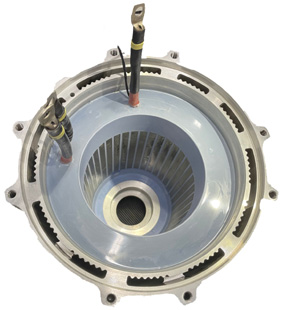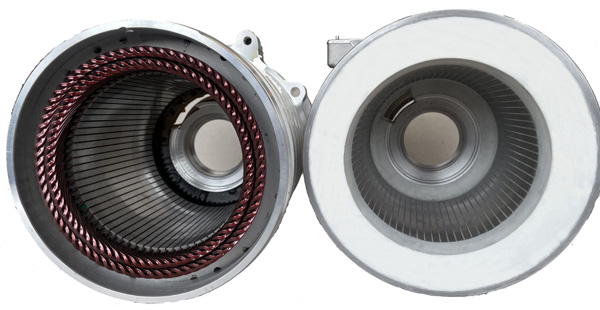Our products
Whether tried and tested or individually tailored to your needs – we ensure that you receive the ideal adhesives and sealants for your application.
Gutentor Advanced Text
Underfill Materials
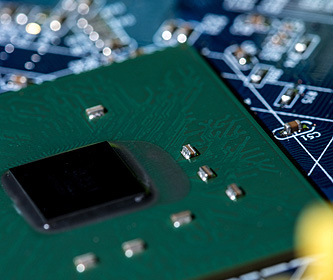
Underfills are usually epoxy-based materials used in electronic assemblies to fill the gap between the BGA, CSP or flip-chip components and the PCB. This protects the components against shocks, drops, thermal cycling and vibration. Roartis® offers different capillary underfills with unique properties such as high Tg, low CTE and good flowability (for applications with very small gaps).
UV curable adhesives
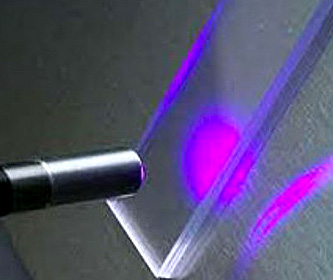
Roartis® offers a portfolio of UV curing adhesives. The UV curing adhesives have unique yellowing properties for optical applications such as glass bonding, optical sensors, OLED lighting, etc. We also have UV adhesives that are suitable for structural bonding where a high curing speed is required. The base chemistry of our UV adhesives are epoxies, acrylics and/or polyurethanes.
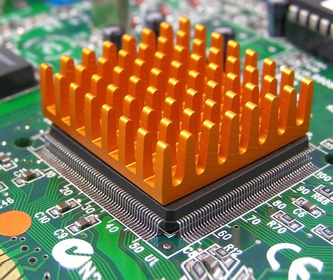
Electronic devices are becoming ever smaller, lighter and more powerful. This trend of electronic miniaturisation is one of the driving forces for improved heat dissipating materials. Roartis® has developed a portfolio of 1- and 2-part thermally conductive adhesives that help dissipate heat. All electrically conductive materials, based on silver fillers, have a thermal conductivity of > 5 W/m.°K.
The following products are insulating materials, often combined with very small thermally conductive fillers, ideal for applications where heat needs to be dissipated through thin bond lines.
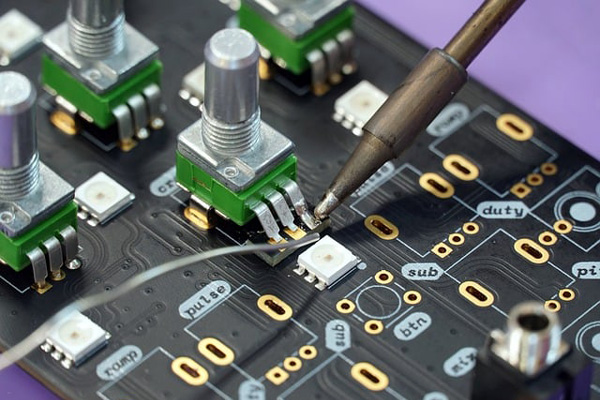
Our liquid gap fillers are designed for high-reliability automotive and industrial applications in harsh environments. Unlike more traditional thermal pads, Roartis IQ-BOND liquid gap filler solutions offer significant advantages such as excellent heat dissipation, vibration resistance, silicone-free chemistry to avoid potential contamination of sensitive electronic components and high adhesion strength.
In contrast to thermally conductive adhesives, which Roartis® also offers, a thermally conductive paste does not provide mechanical strength to the connection between the heat source and the heat sink. A mechanical fixation (e.g. screws) is needed to ensure pressure between the two substrates to ensure good contact with the heat source.
Traditional suppliers often offer thermal pastes based on silicone chemistry. Roartis® has chosen to develop non-silicone based thermal pastes to eliminate the risk of silicone contamination, e.g. in semiconductors or automotive assembly.
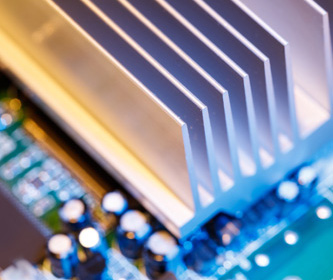
Our liquid gap fillers are designed for high-reliability automotive and industrial applications in harsh environments. Unlike more traditional thermal pads, Roartis IQ-BOND liquid gap filler solutions offer significant advantages such as excellent heat dissipation, vibration resistance, silicone-free chemistry to avoid potential contamination of sensitive electronic components and high adhesion strength.
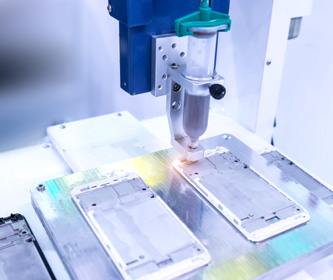
Roartis® offers different materials used for bonding various substrates such as glass, plastic, metal, ceramics, etc. Where many of our adhesives are specifically designed for well-defined applications such as chip bonding, chip protection, electrical or thermal conductivity, our group of structural adhesives is a more generalised group of epoxy or epoxy-hybrid adhesives with high bond strength.
This group can be used in a wide range of applications … on the one hand the simple connection of a printed circuit board in a plastic housing for applications at room temperature, on the other hand the more complex connection of a camera module on a carrier for aerospace applications.

Roartis® has a wealth of experience in the development and production of state-of-the-art SMD adhesives specifically designed for the bonding of SMD components. Our portfolio includes materials for dispensing, jetting and printing processes.
All IQ-BOND SMD adhesives are compatible with Pb-free wave soldering processes and offer high green strength to ensure high yields during the assembly process of all common SMD components.
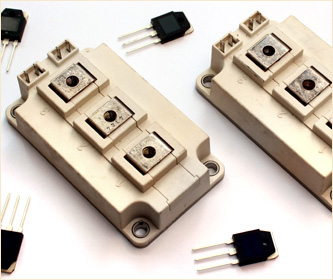
Epoxy-based thermoset hybrid sinter adhesives or silver-based sinter paste for high-performance die attach applications. We thus offer the combination of high temperature resistance paired with first-class thermal and electrical conductivity. Typical applications include power semiconductors, high-power LEDs, automotive power supply modules for electric vehicles, RF devices, laser diodes, solder replacement, concentrator solar cells, etc.
Despite the high filler content, these materials have a relatively low viscosity. The rheology is therefore ideal for applying and embossing small dots.
Currently our sintering materials are based on silver, but we are working on other technologies. Please contact us for more information.

New range of development products. As this is strictly confidential, please contact us for further information.
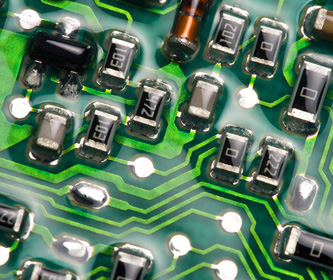
Casting resins are designed to insulate components on a printed circuit board and protect them from application and environmental influences. Roartis® offers a range of competitively priced epoxy casting resins to meet the most demanding application specifications.
Our portfolio includes flame retardant materials certified to UL94-V0 and very low viscosity resins for applications requiring extremely good flow properties. Our R&D chemists can formulate an epoxy resin to meet your specific application requirements.
Our capabilities include excellent dielectric properties, electrical insulation resistance, thermal conductivity, thermal shock resistance, mechanical strength, hardness and chemical resistance.
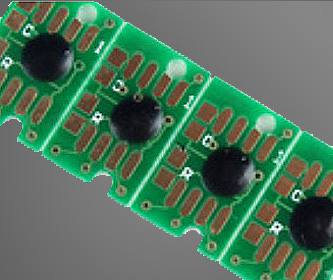
In many electronic assemblies, sensitive components such as chips, RF components of quartz oscillators, BGAs and CSPs require reliable protection against aggressive external influences. Roartis® ‘Glob Top’ and ‘Dam & Fill’ epoxy resins with high Tg and low CTE are used in demanding applications where customers require resistance to thermal cycling between -55°C and 180°C.
Even extensive moisture exposure tests (2000 hours 85°C / 85% RH) have proven to be no obstacle for Roartis® ‘Glob Top’ or ‘Dam & Fill’ materials.
Where ‘Dam & Fill’ resins are typically used for larger chip applications, ‘Glob Top’ resins are mostly used for smaller chips. In order to minimise process time, the chemistry of the dam & fill encapsulants has been optimised to allow for a co-curing process.
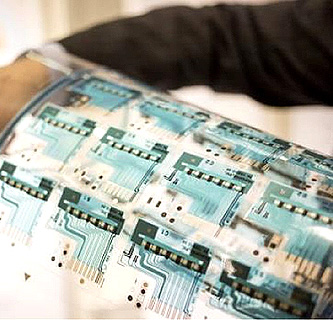
ROARTIS® offers a wide range of ink solutions for various markets such as IoT, consumer electronics, medical, automotive and construction, suitable for screen and inkjet printing applications.
Like most things in electronics, most printed electronics applications are becoming smaller and more complex in functionality. Our ability to formulate inks that meet the demands of fine-line printing while maintaining robust conductivity and other functional properties has led to technological innovations in our comprehensive portfolio of inks for printed electronics. To meet the desired application requirements, we offer product selection support for printed electronics materials.
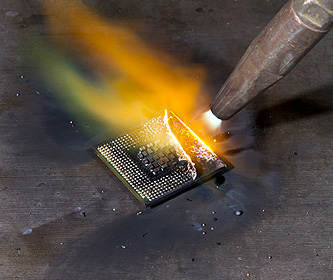
Flame retardant adhesives or resins are material solutions for the protection of electrical and electronic components in the event of fire. This protection is required in certain applications such as the utility, automotive and / or industrial markets. In contrast to conventional flame retardant adhesives, Roartis® offers halogen-free materials that are UL94-V0 certified.

Roartis® offers both isotropic conductive adhesives (conductive in 3 dimensions) and anisotropic conductive adhesives (conductive only in the z-direction). In our family of electrically conductive adhesives, we offer materials whose rheology is optimised for dispensing, spraying, stencil printing or screen printing and/or stamping. Typical applications include bonding microelectronic components to temperature-sensitive substrates, such as flexible circuits, or replacing solder pastes in applications where increased flexibility is required.
Electrically conductive adhesives are an excellent alternative to brittle solder pastes in applications where a large number of thermal cycles are required.
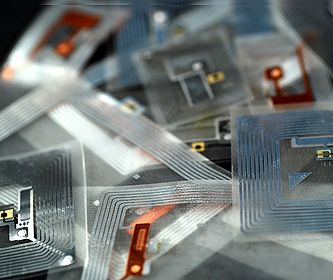
Roartis® offers electrically conductive adhesives that are both isotropic (conductive in three dimensions) and anisotropic (conductive only in the Z direction). Anisotropic electrically conductive adhesives are mainly used in applications where flip-chip components are bonded to substrates with very small interconnect pitches. Traditional suppliers often offer anisotropic conductive adhesives based on nickel, which is considered carcinogenic. Roartis® has chosen to use other fillers that are more environmentally friendly and not harmful to the human body.
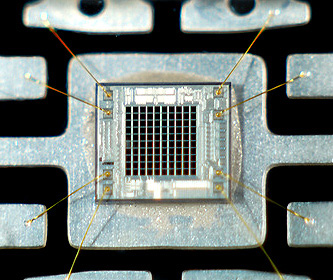
Within the ROARTIS® range of electrical and insulating adhesives, several products have a rheology that is optimised for die-attach application. Our electrically conductive and insulating adhesives are optimised for high-speed application or spraying.
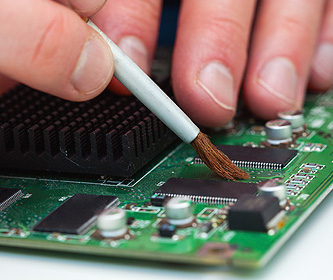
If you are looking for cleaning agents to remove or clean adhesive residues from your application and / or application tools (dispensers, stencils, …), we offer cleaning agents that are optimised for fast, effective and economical cleaning.
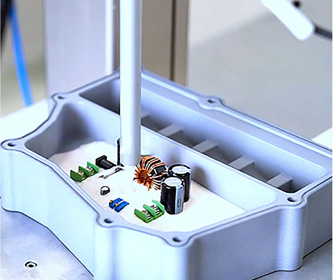
Silicones are indispensable materials that play a central role in numerous industries. Their unique properties such as temperature resistance, flexibility, durability and chemical stability make them ideal for demanding applications in the automotive, solar and other industries. In the automotive industry, silicones are the solution for modern, high-performance vehicles. They are used as liquid sealants, so-called CIPG or FIPG, potting compounds or as adhesives and sealants to ensure optimum performance even under extreme conditions such as heat, cold and humidity. Silicone adhesives and coatings are also crucial for safety and comfort, e.g. when installing windscreens or damping vibrations in vehicle interiors.
The solar industry benefits from the durability and UV resistance of silicones. They are used to seal solar cells and in encapsulation materials to increase the service life of solar modules and ensure their efficiency. By using silicones, solar systems can operate reliably even under extreme weather conditions, which improves sustainability and energy efficiency.
Outside of the automotive and solar industries, silicones are used in almost every sector. They are key components in medicine, where their biocompatibility and safety are valued, and silicones are also used in electronics for protective coatings
Silicones offer a perfect balance of performance and versatility, and their applications are growing with the demands of the modern world. Discover the benefits of silicones for your applications and rely on materials that make the difference.
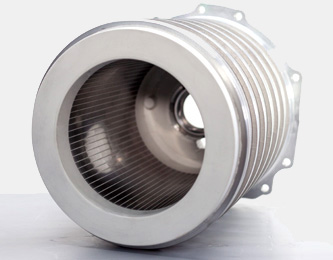
Get more power from an electric drive with thermal management for e-motors or e-drives. Vacuum encapsulated stators help to dissipate heat from the winding heads. This protects the electric motor from overheating without the control electronics having to intervene. Vacuum encapsulation with Lambdapox enables you to achieve a significantly higher continuous thermal load and peak power.
Lambdapox ensures very good heat dissipation and is therefore an ideal heat transporter due to its high thermal conductivity.
